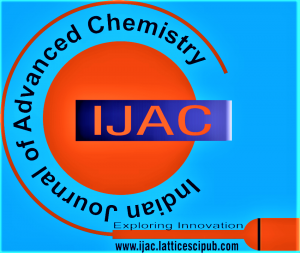![]()
Evaluation of the Geotechnical and Mineralogical Properties of the Clay of the Locality of Leboulou
Banzouzi Samba Vivien Igor1, Dimouangana Zita Flora2, Vezolo Stanislas Prudence3, Mbendi Mpingui4, Maniongui Kris Berjovie5, Moutou Joseph-Marie6
1Banzouzi Samba Vivien Igor, Department of Chemistry, Faculty of Applied Sciences, Denis Sassou N’guesso University, Brazzaville, Congo, Republic of the.
2Dimouangana Zita Flora, Department of Chemistry, Higher Normal School, Marien Nouabi University, Brazzaville, Congo, Republic of the.
3Vezolo Stanislas Prudence, Department of Chemistry, Laboratory of Mineral and Applied Chemistry, Marien Nouabi University, Brazzaville, Congo, Republic of the.
4Mbendi Mpingui, Department of Chemistry, Laboratory of Mineral and Applied Chemistry, Marien Nouabi University, Brazzaville, Congo, Republic of the.
5Maniongui Kris Berjovie, Department of Chemistry, Laboratory of Mineral and Applied Chemistry, Marien Nouabi University, Brazzaville, Congo, Republic of the.
6Moutou Joseph-Marie, Department of Chemistry, Laboratory of Mineral and Applied Chemistry, Marien Nouabi University, Brazzaville, Congo, Republic of the.
Manuscript received on 23 September 2025 | Revised Manuscript received on 05 October 2025 | Manuscript Accepted on 15 October 2025 | Manuscript published on 30 October 2025 | PP: 29-37 | Volume-5 Issue-2, October 2025 | Retrieval Number: 100.1/ijac.B203305021025 | DOI: 10.54105/ijac.B2033.05021025
Open Access | Ethics and Policies | Cite | Zenodo | OJS | Indexing and Abstracting
© The Authors. Published by Lattice Science Publication (LSP). This is an open-access article under the CC-BY-NC-ND license (http://creativecommons.org/licenses/by-nc-nd/4.0/)
Abstract: This work aims to valorize clay sourced from the locality of Leboulou, Kimbangou District, Niari Department, southeastern Congo. With this in mind, we proceeded to determine the mineralogical, physicochemical, thermal, and geotechnical properties of this clay. To achieve the expected results, several techniques were employed, including x-ray diffraction, Fourier transform infrared spectroscopy, gravimetric and differential thermal analyses, scanning electron microscopy, chemical analysis by ICP-AES, Atterberg limits, particle size analysis, and cation exchange capacity. Mineralogy reveals that Kaolinite is the only clay species present in this clay, associated with quartz, with a kaolinite-to-quartz ratio of 88.37% to 11.63%, respectively. The geotechnical properties reveal that LEB can be compared to a very plastic clay and loamy soil, with a plasticity index of 26.6, and contains 58% of fine particles (less than 2 microns). With these properties, LEB cannot be used for the applications proposed by WINKLER, it would be necessary to add to this clay a material less rich in fine particles, such as sand. Chemical analysis reveals that the dominant minerals in this clay are aluminum and silicon oxides. The Al2O3/SiO2 ratio = 0.6 will limit the use of LEB in pottery and earthenware. It could also be used in the manufacture of geopolymer cement and as an ingredient in the production of paints.
Keywords: Clay, Valorization, Mineralogy, Geotechnical, Physico-Chemical, Thermal.
Scope of the Article: Material Chemistry
